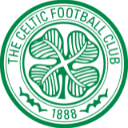
Celtic Football Club, one of the most iconic and successful football clubs in Scotland and Europe, has a history of jerseys rooted in tradition and symbolism. Founded in 1887 in Glasgow, Celtic's kits have become synonymous with a passionate fan base and rich heritage.
Very early on, Celtic used the now famous green and white hoops for their home kit. The concept for the kit is said to have been inspired by the green and white ringed shirts by Hibernian, an Irish-influenced club from Edinburgh. These hoops have become an integral part of Celtic's identity, setting them apart from other football clubs and showcasing their Irish roots. Over the years, Celtic's green and white hoops have remained a constant feature of their home kit, infusing fans with a sense of continuity and nostalgia. The vertical stripes represent Celtic traditions and colors associated with Ireland and the club's Irish heritage.
One of the biggest changes in Celtic's kit history came in the 1970s when the club introduced the iconic white and green away kit. The away kit immediately impresses supporters, especially when worn in European competitions, and it further strengthens the club's identity on the world stage.
Celtic's kit history has also seen various home kit manufacturers including Umbro, Nike and New Balance. Each manufacturer has added their own unique touches to the design while keeping the traditional green and white rings intact.
The club's crest has evolved over time, with various elements such as a Celtic cross, a soccer ball, as well as the club's name and motto, "A club like no other." . The badge design has evolved to represent Celtic's rich history and achievements.
Celtic's kits have seen numerous victories on both domestic and European fronts, including a historic victory in the 1967 Champions League, where they became the first English club to win the title. this prestigious tournament. The green and white bangles have become synonymous with success, tradition and unwavering support from their ardent fans, commonly known as the 'Bhoys' and 'Ghirls'.
The importance of Celtic's kit history extends beyond football; it represents a culture, a community and a way of life. The green and white hoops continue to be a powerful symbol that unites Celtic fans around the world and the club's kit remains a testament to their enduring legacy in one game. nice fight.
Very early on, Celtic used the now famous green and white hoops for their home kit. The concept for the kit is said to have been inspired by the green and white ringed shirts by Hibernian, an Irish-influenced club from Edinburgh. These hoops have become an integral part of Celtic's identity, setting them apart from other football clubs and showcasing their Irish roots. Over the years, Celtic's green and white hoops have remained a constant feature of their home kit, infusing fans with a sense of continuity and nostalgia. The vertical stripes represent Celtic traditions and colors associated with Ireland and the club's Irish heritage.
One of the biggest changes in Celtic's kit history came in the 1970s when the club introduced the iconic white and green away kit. The away kit immediately impresses supporters, especially when worn in European competitions, and it further strengthens the club's identity on the world stage.
Celtic's kit history has also seen various home kit manufacturers including Umbro, Nike and New Balance. Each manufacturer has added their own unique touches to the design while keeping the traditional green and white rings intact.
The club's crest has evolved over time, with various elements such as a Celtic cross, a soccer ball, as well as the club's name and motto, "A club like no other." . The badge design has evolved to represent Celtic's rich history and achievements.
Celtic's kits have seen numerous victories on both domestic and European fronts, including a historic victory in the 1967 Champions League, where they became the first English club to win the title. this prestigious tournament. The green and white bangles have become synonymous with success, tradition and unwavering support from their ardent fans, commonly known as the 'Bhoys' and 'Ghirls'.
The importance of Celtic's kit history extends beyond football; it represents a culture, a community and a way of life. The green and white hoops continue to be a powerful symbol that unites Celtic fans around the world and the club's kit remains a testament to their enduring legacy in one game. nice fight.

























